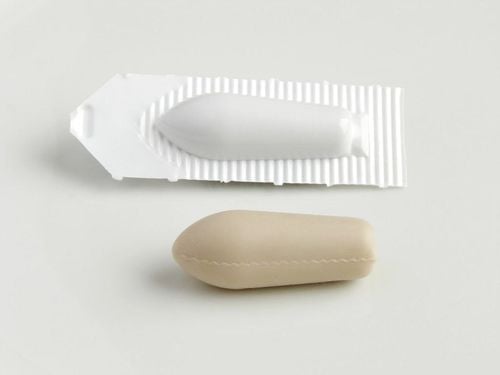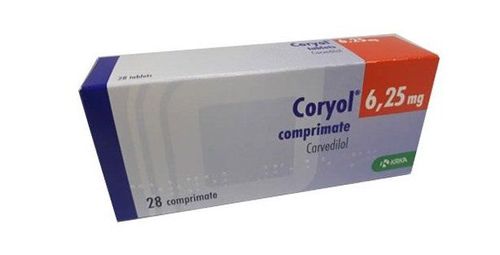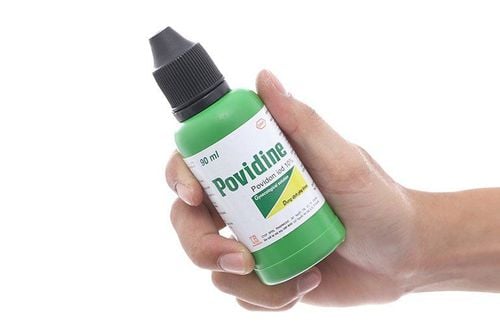1. What Is Avlocardyl?
Avlocardyl 40mg contains the following components:
- The main active ingredient is Propranolol at a dosage of 40mg
- Other excipients are included in sufficient quantities for one tablet.
The medication is formulated as tablets. It is a cardiovascular drug used to treat angina pectoris and hypertension, particularly after myocardial infarction.
2. Effects and Indications of Avlocardyl
2.1. Effects of Avlocardyl
The active ingredient, Propranolol, is a non-selective beta-adrenergic blocker. Its effects include: Reducing cardiac output, heart rate, and the speed and force of myocardial contractions, Inhibiting renin release by the kidneys, Blocking sympathetic nerve activity from the brain's vasomotor center, Slightly increasing potassium levels in hypertensive patients and reducing systolic blood pressure.
2.2. Indications for Avlocardyl 40mg
- Treatment and prevention of angina pectoris, except Prinzmetal's angina.
- Management of hypertension and long-term treatment after myocardial infarction.
- Prevention and treatment of rapid arrhythmias.
- Emergency treatment of paroxysmal sinus and junctional tachycardia, atrial fibrillation or flutter, and ventricular tachycardia.
3. Usage and Dosage of Avlocardyl
3.1. How to Use Avlocardyl
- Avlocardyl 40mg is in tablet form and taken orally.
- The medication should be taken before meals.
3.2. Dosage for Avlocardyl Treatment
For Hypertension:
- Initial dose: 20–40 mg (1/2–1 tablet) twice daily. Gradually increase the dose every 3–7 days until blood pressure stabilizes.
- Typical effective dose: 160–480 mg daily, with some cases requiring up to 640 mg/day. The time to achieve a therapeutic response ranges from a few days to several weeks.
- Maintenance dose: 120–240 mg daily.
For angina pectoris: Take 80–320 mg daily, equivalent to 2–8 tablets of Avlocardyl 40mg, divided into 2, 3, or 4 doses throughout the day.
For arrhythmias: Take 10–30 mg 3–4 times daily, before meals and at bedtime.
For myocardial infarction: Take 180–240 mg daily, divided into multiple doses.
To prevent recurrent myocardial infarction and sudden cardiac death after acute myocardial infarction: Take 80 mg (2 tablets of Avlocardyl 40mg) twice daily. If necessary, the dose can be increased to three times daily.
For migraines:
- The initial dose is 80 mg daily (equivalent to 2 tablets of Avlocardyl 40mg), divided into multiple doses.
- The typical effective dose is 160–240 mg daily. The dosage can be gradually increased to achieve maximum effectiveness. If no therapeutic effect is observed after 4–6 weeks at the maximum dose, discontinue propranolol gradually over several weeks.
For essential tremors:
- The initial dose is 40 mg (1 tablet of Avlocardyl 40mg) twice daily.
- The typical effective dose is 120 mg daily (3 tablets of Avlocardyl 40mg), with some cases requiring 240–320 mg per day.
For hypertrophic subaortic stenosis: ake 20–40 mg 3–4 times daily, before meals and at bedtime.
For pheochromocytoma: ake 60 mg daily, divided into multiple doses, for 3 days prior to surgery in combination with alpha-adrenergic blockers.
For long-term management of inoperable tumors: Take 30 mg daily, divided into multiple doses.
For hyperthyroidism,The therapeutic dose is 10–40 mg 3 or 4 times daily. In some cases, intravenous administration may be required: 1 mg IV over 1 minute, repeated every 2 minutes as needed, up to a maximum dose of 10 mg for conscious patients or 5 mg for anesthetized patients.
For portal hypertension: The initial dose is 40 mg (1 tablet of Avlocardyl 40mg) twice daily. The dose can be increased as needed, up to 160 mg twice daily.
For children: oral use only, for hypertension
- Initial dose: 0.5 mg/kg body weight twice daily.
- Typical dose: 1–2 mg/kg body weight twice daily.
4. Side Effects of Avlocardyl
Less common side effects:
- Cardiovascular system: Bradycardia, congestive heart failure, atrioventricular block; hypotension; purpura, thrombocytopenia; reduced arterial perfusion, often presenting as Raynaud’s phenomenon.
- Nervous system: Mild headache, dizziness, uncoordinated movements, irritability, hearing loss, visual disturbances, hallucinations, confusion, insomnia, significant fatigue, weakness, depression leading to hypotonia. Organic brain syndrome symptoms include disorientation in time and space, short-term memory loss, emotional instability. Paresthesia in hands and peripheral neuropathy.
- Respiratory system: Pharyngitis, bronchospasm.
- Hypersensitivity reactions: Red rash, fever accompanied by throat pain, laryngospasm, acute respiratory failure.
- Blood: Reduced granulocytes, thrombocytopenic purpura, or non-thrombocytopenic purpura.
- Digestive system: Nausea, vomiting, abdominal cramps, epigastric pain, digestive disorders such as diarrhea, constipation, and flatulence.
Rare side effects:
- Systemic: Lupus erythematosus.
- Hair loss, dry eyes, and erectile dysfunction.
Patients should immediately inform their doctor if any unusual health symptoms occur during the use of this medication.
5. Interactions of Avlocardyl
When Propranolol is combined with the following medications: Amiodarone, Cimetidine, Diltiazem, Verapamil, Adrenaline, Phenylpropanolamine, Fluvoxamine, Quinidine, Class 1 antiarrhythmics, Clonidine, Chlorpromazine, Lidocaine, Nicardipine, Prazosin, Rifampin, and Aminophylline, dosage adjustments are required.
Caution should be exercised when using medications containing adrenaline in patients taking beta-adrenergic blockers. This is because such combinations may cause bradycardia, vasoconstriction, and severe hypertension.
Careful monitoring is required when combining Propranolol with catecholamine-lowering drugs such as Reserpine, as excessive suppression of the sympathetic nervous system may lead to hypotension, bradycardia, dizziness, fainting, or orthostatic hypotension.
Caution is advised when using beta-blockers in combination with calcium channel blockers, especially intravenous Verapamil. Both agents can inhibit myocardial contractility or reduce atrioventricular conduction. The combination of beta-blocker and Verapamil injections has been associated with severe health complications, particularly in patients with severe cardiomyopathy, congestive heart failure, or recent myocardial infarction.
- Nonsteroidal anti-inflammatory drugs (NSAIDs) can reduce the antihypertensive effects of beta-blockers.
- Concomitant use of Avlocardyl 40mg and haloperidol has been associated with hypotension and cardiac arrest.
- Aluminum hydroxide gel reduces the absorption of Propranolol.
- Ethanol slows the absorption of Propranolol.
- Phenytoin, Phenobarbital, and Rifampin increase the clearance of Propranolol.
- Chlorpromazine, when combined with Propranolol, increases the plasma concentrations of both drugs.
- Antipyrine and lidocaine reduce the clearance of Propranolol.
- Thyroxine (T4), when used with Propranolol, decreases the levels of T3 (triiodothyronine).
- Cimetidine reduces hepatic metabolism, slows elimination, and increases blood levels of Propranolol.
- The clearance of Theophylline decreases when used with Avlocardyl 40mg.
- Insulin and sulfonylureas lower blood sugar levels, but symptoms of hypoglycemia, such as palpitations and tachycardia, may be masked by beta-blockers. Regular blood sugar monitoring is essential, especially at the start of treatment.
- When using Avlocardyl 40mg, it is crucial to inform your doctor about all medications you are taking to avoid unwanted drug interactions.
6. Precautions When Using Avlocardyl
6.1. General Precautions and Warnings
- Use Avlocardyl 40mg with caution in patients with liver or kidney impairment. For long-term use, reduce the dose and regularly monitor liver and kidney function.
- Gradually reduce the dose before discontinuing treatment, especially in patients with myocardial ischemia.
- Drivers and machine operators can use Avlocardyl 40mg but should exercise caution when doing so.
- Check the medication’s quality and expiration date before use to ensure safety.
- During treatment with Avlocardyl 40mg, consult a doctor immediately if you have any questions or concerns.
6.2. Use in Pregnant and Breastfeeding Women
Consider the risks and benefits before using Avlocardyl 40mg during pregnancy or breastfeeding. Only use it if the benefits outweigh the risks, and always consult a doctor before use.
6.3 Storage Instructions for Avlocardyl 40mg
- Store Avlocardyl 40mg as per the manufacturer's requirements or your doctor’s guidance.
- Keep the medication in a sealed container, away from moisture and direct sunlight.
- Store at room temperature, not exceeding 30°C, and ensure proper humidity levels.
- Keep Avlocardyl 40mg out of reach of children and household pets.
Avlocardyl 40mg is a medication used to treat angina pectoris, myocardial infarction, arrhythmias, and other cardiovascular disorders. It also helps maintain stable blood pressure levels.
Follow the Vinmec International Hospital website for more information on health, nutrition, and beauty to protect the well-being of yourself and your loved ones.
Please dial HOTLINE for more information or register for an appointment HERE. Download MyVinmec app to make appointments faster and to manage your bookings easily.
To arrange an appointment, please call HOTLINE or make your reservation directly HERE. You may also download the MyVinmec app to schedule appointments faster and manage your reservations more conveniently.








